Recommendations for selection
When choosing a fabric for sofa upholstery, consider the following important factors:
- Future location in the interior. Models made of artificial leather are good for the kitchen: they do not absorb odors, are easy to clean, and are hygienic. Upholstered furniture in a single-color upholstery fabric or with a repeating pattern will fit into the living room. The upholstery of a sofa for a child’s room should first of all be easy to clean: take a closer look at furniture fabrics with Easy Clean impregnation. The second requirement is environmental friendliness: when choosing natural materials, give preference to models with removable covers.
- Family composition. The upholstery of a sofa in an apartment where two adults live should be different from that used in the homes of large families or pet lovers. A child can accidentally spill juice on the surface, smear it with a chocolate bar, or draw with a pen during a creative outburst: therefore, the upholstery fabric should be practical, wear-resistant, and easy to care for. Cats and dogs are dangerous for upholstered furniture not only with their fur (it is better not to take dark colors), but also with their claws. To avoid snags, choose special dense materials for upholstery of upholstered furniture “anti-claw”.
- Features of everyday life. In the rooms of people who smoke, the sofa should be resistant to odors. Velvet fabrics are not suitable in this case, smooth ones are better.
See more tips on choosing the color of the sofa.
Types of upholstery
How to choose “your” fabric for upholstery of upholstered furniture from a wide range? Let’s look at the features, advantages and disadvantages of modern materials.
Flock
Let’s start with the fabric for the sofa, which stands out among other production methods. Flock has a velvety texture, but it is achieved not by interweaving the threads, but with the help of a special machine that literally glues the villi to the fabric base. Positive and negative characteristics are mainly based on this feature.
- Pleasant to the touch.
- Tear-resistant.
- Does not stretch.
- Does not fade in the sun.
- A large palette of colors.
- Resistant to snags and claws.
- Practically does not absorb water.
- Can be vacuumed, rubbed with sponges, washed.
- Electrified, can “shock”.
- Attracts dust (dry cleaning with a vacuum cleaner once a week is recommended).
- Does not tolerate high temperatures.
- Spoils when in contact with alcohol-containing liquids (spill a glass of alcohol = irreparably spoil the furniture).

Rogozhka
Reliable, textured and time-tested upholstery for a sofa. Initially, sacks and rugs were made from rogozhka – the fabric still retains an external resemblance to burlap (that’s why it is loved), but has become stronger, denser, more durable. They are made from natural (cotton, linen, wool) or synthetic (acrylic, polyester) fibers, but blended fabrics are the most popular: they are more practical than completely natural ones.
- Durable — mechanical damage is excluded.
- Universal — suitable for most styles, rooms.
- Eco-friendly — especially when it comes to cotton, linen fabrics.
- Hypoallergenic — suitable for families with allergies or small children.
- Affordable — there are both extremely budget-friendly and “luxury” options in terms of cost and quality.
- Loose — if the edge is not processed during production, it will crumble.
- Prone to snagging — not suitable for families with cats, dogs.
- Stretchable — loses shape with prolonged exposure.
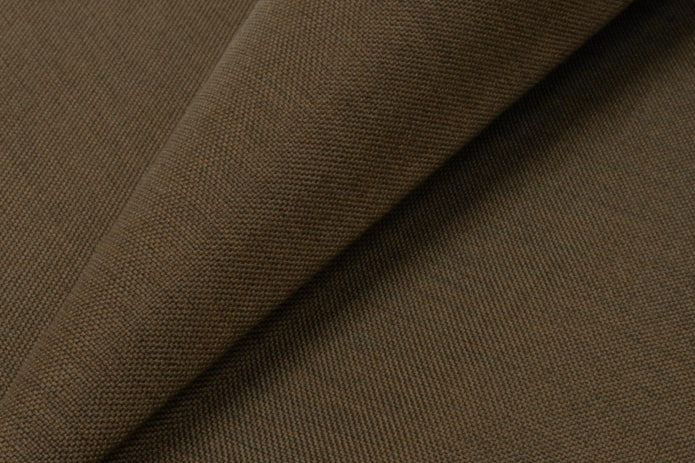
Chenille
These fabrics for sofas are made using jacquard weaving, but differ from jacquard in the presence of fluffy threads that give a velvety feel.
- Increased wear resistance. Will last not 5-7 years, but all 10-15.
- Preservation of the original appearance. No pellets, stretching, abrasions, creases, folds.
- Pleasant to the touch. Will appeal to children and adults.
- Resistant to odors. Suitable for kitchens, smokers’ homes, offices.
- Capturing in care. Soap solutions and water leave streaks. Can only be washed with special products.
- Afraid of sunlight. Bright, dark fades in southern, eastern living rooms, bedrooms.
- Prone to snags. Not suitable for animal lovers.
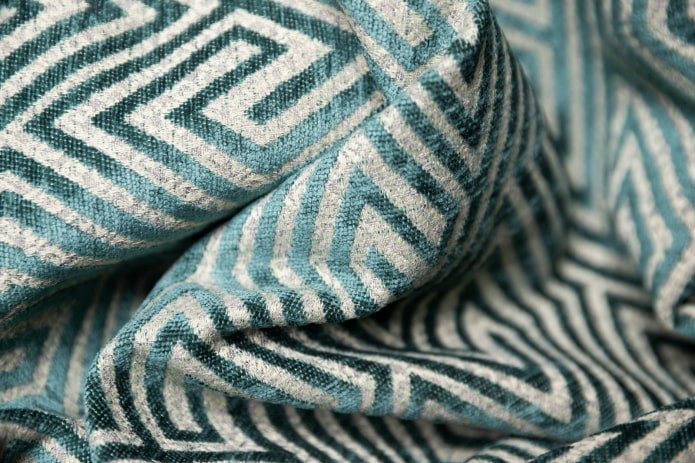
Jacquard
Jacquard weaving is an invention of Joseph Jacquard. He created a machine that could literally weave a pattern, rather than knock it out, as was done before. Initially, the process was expensive, and only wealthy members of society could afford such upholstery for a sofa. Jacquard is still considered an exquisite, expensive fabric.
- Appearance. The beautiful patterns inherent in the material distinguish it from others.
- Durability. Due to the interweaving of many threads, jacquard lasts longer than many other fabrics.
- Easy to clean. Requires infrequent (once every 2-4 weeks) vacuuming, dirt can be removed with soapy water.
- High price. No less durable fabrics for a sofa can be found cheaper.
- Questionable design. Jacquard patterns will definitely not fit into modern styles.
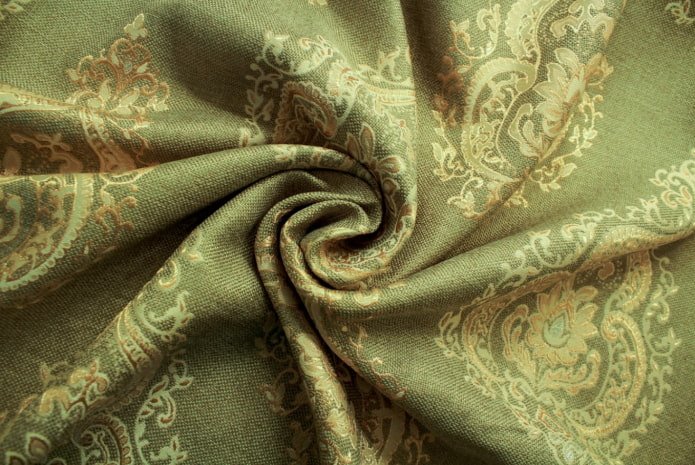
Velour
The second most popular after matting is pleasant, velvet velour, which has a large selection of textures and shades.
- Stylish appearance. The surface resembles velvet, dark shades look deep, rich.
- Tactility. Sofas and armchairs are pleasant to touch, sit on, lie on.
- Hypoallergenic. Suitable for everyone.
- Stretch resistance. Unlike matting, no dents or “extra” fabric will appear over time.
- Excellent UV resistance. Can be used in sunny rooms.
- Easy to clean. Even without additional treatment, it is enough to vacuum, remove individual stains with a damp cloth.
- Low abrasion resistance. May show signs of wear.
- Prone to creases and folds.
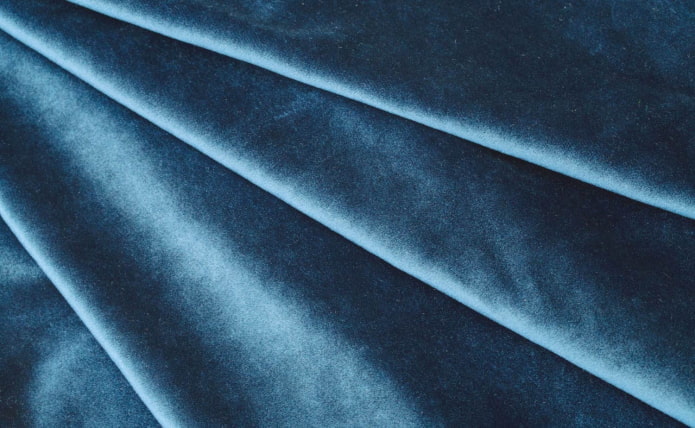
Tapestry
Initially, tapestries were considered to be lint-free carpets: they were loved for the originality of their designs and bright colours. Recently, this unusual fabric has regained its popularity, but now as furniture upholstery.
- Density. Heavy multi-layer fabric guarantees durability. Resistance to creasing. Creases are practically not formed.
- Durability. Does not shrink, does not stretch, is not prone to abrasion.
- Original pattern. Bright, detailed, rich pictures.
- Rigidity. Density played a cruel joke: the fabric is durable, but “wooden”.
- Demanding in care. You will have to call in specialists to clean it.
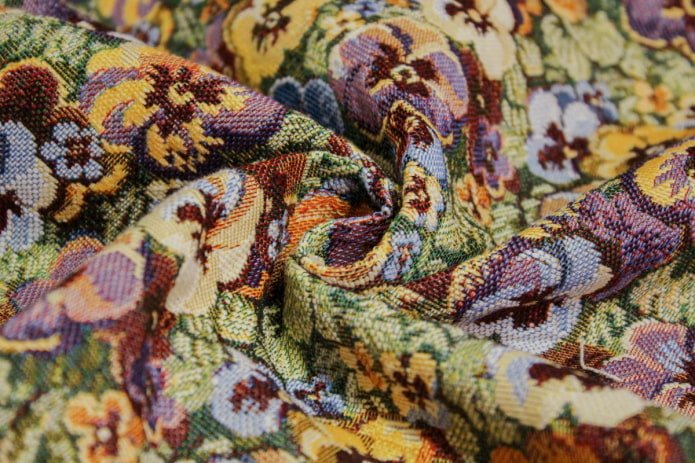
Genuine leather
Sofas and armchairs made of genuine leather were, are, and remain a symbol of wealth and prestige.
See the recommendations for caring for leather furniture.
- Does not accumulate dust. Unlike pile coverings.
- Does not become electrified. No electric shocks.
- Serves a long time. With proper care, it will live 20-40 years.
- Hygroscopic. Absorbs excess moisture, and releases it when the air is dry.
- Looks stylish. Leather products are relevant at all times in most styles.
- Expensive. A small pouf can cost 15-20,000 rubles, not to mention a full-fledged sofa.
- Not comfortable to use at home. It is cold to sit on in winter, and bare feet will sweat and stick in summer.
- Requires regular maintenance. The covering should be moistened – then it will not crack, stretch, or deteriorate. This is an additional expense of money, effort, time.
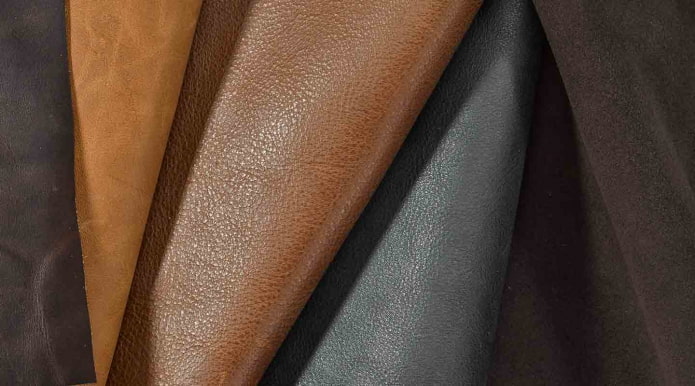
Artificial leather
Since leather products have always been expensive, manufacturers sought to reduce the cost of the production process and found an excellent way: imitation, or, in simple terms, artificial leather.
- A favorable price. Even high-quality material will cost several times less than genuine leather.
- Minimal difference in appearance. High-quality artificial leather perfectly imitates genuine leather.
- All the disadvantages inherent in genuine leather: discomfort in heat and cold, regular care.
- Short-lived. In most cases, the sofa upholstery begins to crumble after 3-5 years of use.
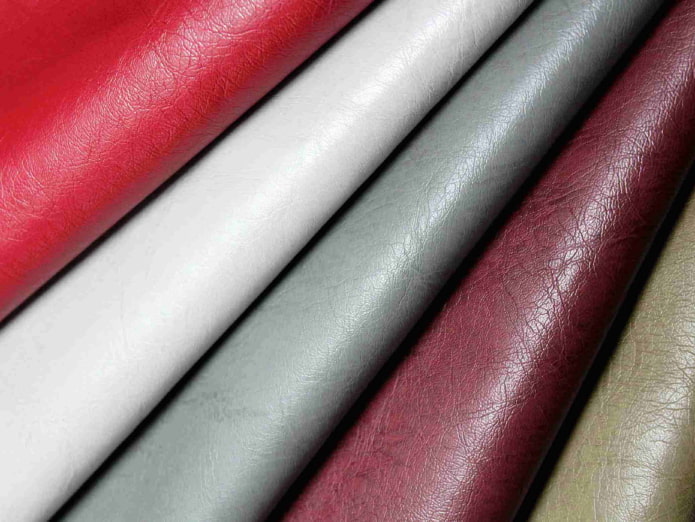
Boucle
The main difference is the rough surface, reminiscent of astrakhan fur coat.
- Lightness, softness, despite the apparent bulkiness.
- Resistance to creases. No dents, folds.
- Elasticity. Suitable for furniture of different shapes.
- Invisible seams. Due to the splendor, all threads will remain invisible.
- Tendency to snags. But the drawstrings can be easily hidden with a hook.
- Low versatility. Not all rooms or design styles will fit furniture with curly pile.
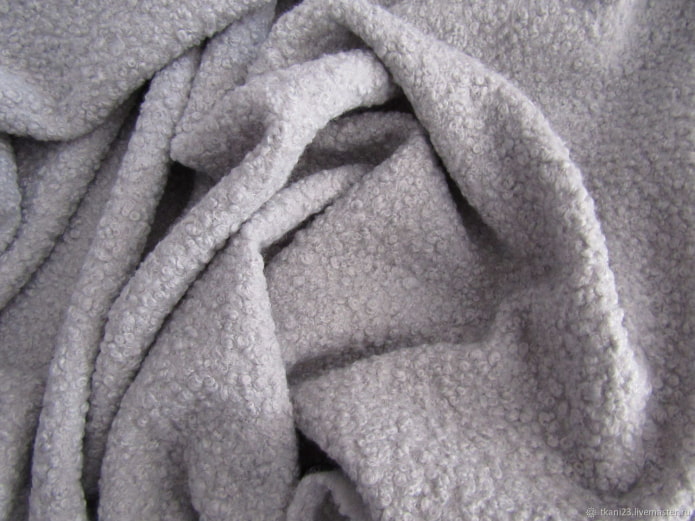
Microfiber
A relatively new option, somewhat reminiscent of textured velor in appearance.
- Pleasant to the touch. Soft, suitable for children’s rooms and living rooms.
- Hygroscopic. Allows air to pass through, “breathes” perfectly.
- Wear-resistant. Maintains its original appearance for a long time: does not roll, does not wear out, does not fade.
- Easy to care for. A soap solution is enough.
- Hypoallergenic. Does not cause reactions.
- Electrifies. A shock from static electricity is not very pleasant.
- Does not like high temperatures. It is forbidden to place it near radiators.
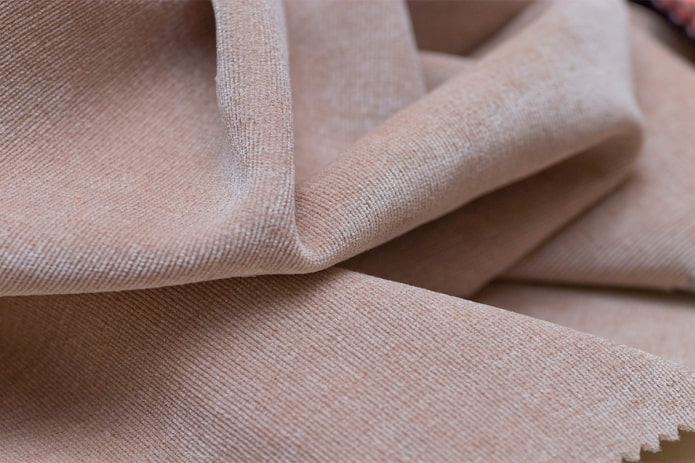
What is the best material?
Before making a final choice, let’s go over the main criteria and the best options again.
Durability
Chenille, genuine leather, and jacquard are considered the most reliable. High-quality velour, flock, and burlap will last a little less.
Due to the natural fibers in the composition, burlap can be considered the winner.
Appearance plays an important role, but the desired effect can be achieved in different ways: choose the fabric that suits you. Then the sofa will last a really long time!
Now reading:
- Classic Kitchen: 60 Photos and Interior Design Tips
- Perfect Roof and Facade Color Combinations for Your Home (21 Photos)
- Bean bag chair: 39 photos in the interior, tips for choosing and its features.
- 15 creative ways to use burnt wood in the country to decorate your home and plot.
- Bed at a height: more than 40 photos of interiors and modern design solutions.